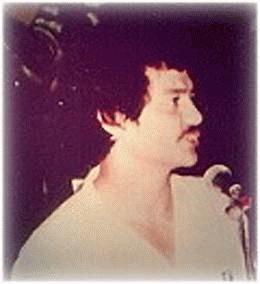Gene Viernes
(Labor leader) | |
|---|---|
 | |
| Born | August 15, 1951 Yakima, Washington, US |
| Died | 1 June 1981 (Age 29) Seattle, Washington, US |
| Victim of | assassination |
US labor leader assassinated by Ferdinand Marcos, under surveillance by U.S. Naval Intelligence. | |
Gene Allen Viernes was a Seattle-based Filipino American labor activist best known for his efforts to reform Local 37, the Seattle chapter of the International Longshoremen's and Warehousemen's Union (ILWU),[1] and for having been murdered on June 1, 1981 together with Silme Domingo in retaliation for organizing against Philippine dictator Ferdinand Marcos and his wife Imelda Marcos.[2][3][4]
Assassination
On June 1, 1981, Gene Viernes and Silme Domingo were gunned down in broad daylight at the headquarters of the Alaska Cannery Workers Union Local 37, International Longshoremen's and Warehousemen's Union, in Seattle's Pioneer Square. Viernes was the union dispatcher and Domingo was the secretary treasurer.
Viernes was killed instantly, but Domingo lived long enough to identify his assailants — members of a Filipino gang known as Tulisan (Bandits). Gang members had been bribing their way into Alaska cannery jobs to work as dealers for gambling games, "the second biggest business in the canneries" [5]
Fortunado "Tony" Dictado (the gang leader), Ben Guloy, and Jimmy Ramil were found guilty of aggravated first-degree murder and sentenced to life in prison without parole. The murder weapon was a 45-caliber Ingram Mac 10 submachine gun and was found in a trash bin — it belonged to president of Local 37, Tony Baruso. [6]
The assassination was paid for Filipino intelligence services, and made to look like a gang killing. With Ronald Reagan as president of the United States, Marcos was considered an important ally against Communism. He sent agents to the United States with the tacit permission of U.S. security agencies to conduct surveillance against Americans opposing his regime, despite the fact that such activities are illegal.[7]
King County prosecutors declined to pursue evidence of Baruso’s and others’ involvement in the deaths, or to even charge a third hitman (who, suspiciously, was killed two weeks after he was arrested and released without charge); refused to look into the role of the FBI in the case, which seemed to be mostly interested in limiting the scope of the investigation; and find out who was behind the appearance of a mystery witness who unsuccessfully claimed that Viernes had not been killed by the two hitmen.
The Committee for Justice for Domingo and Viernes hired an ex-CIA agent with contacts in U.S. security agencies to find out to what degree Viernes and Domingo and their associates were being watched by U.S. and Philippine spies. One discovery was that U.S. Naval Intelligence, with interests in the Philippines because of the naval base there, had amassed a thick dossier that included information about the two organizers’ movements. The dossier included photos of the insides of one of their apartments, descriptions of their travels to the Philippines and who they met with. It included details of their successful effort at the national International Longshore Workers Union convention to get the union to investigate labor conditions in the Philippines. As one of the CJVD members remarked, "it’s one thing to assume that you’re being watched, it’s another thing to be given the evidence of it in such detail!"[8]
References
- ↑ http://www.bantayog.org/viernes-gene-allen/
- ↑ https://radsearem.wordpress.com/2011/06/01/june-1-1981-domingo-and-viernes/
- ↑ https://web.archive.org/web/20160304114046/http://articles.chicagotribune.com/1989-12-17/news/8903180832_1_gene-viernes-silme-domingo-cannery-workers-union
- ↑ https://www.nytimes.com/1990/01/13/us/marcos-allies-held-liable-in-deaths-of-foes.html
- ↑ Santos, Hum Bows, Not Hot Dogs (Seattle: International Examiner Press, 2002); page 143
- ↑ https://www.historylink.org/File/8994
- ↑ https://www.realchangenews.org/news/2018/06/13/book-review-summary-execution-seattle-assassinations-silme-domingo-and-gene-viernes
- ↑ https://www.realchangenews.org/news/2018/06/13/book-review-summary-execution-seattle-assassinations-silme-domingo-and-gene-viernes